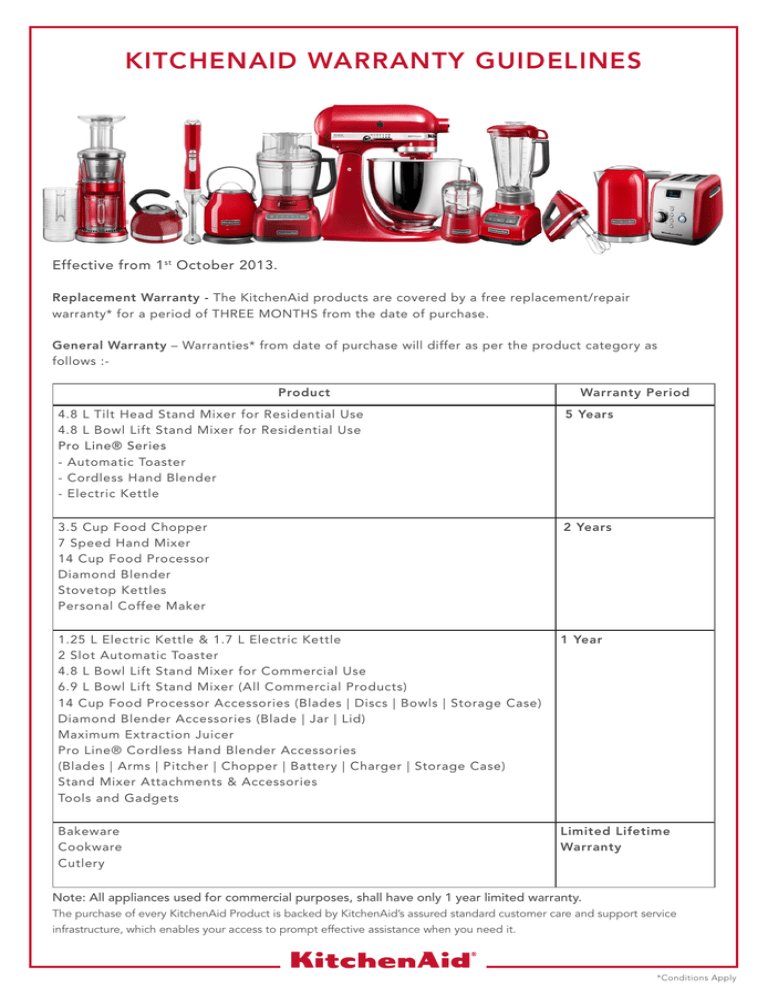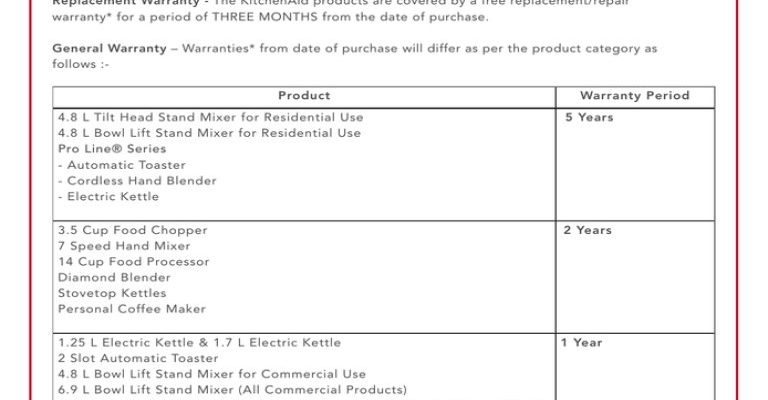
Honestly, the answer isn’t as tricky as you might expect. Imagine your oven as a trusty friend that sometimes needs help. The warranty is like their health insurance, but does that insurance kick in only if you “register” your friend first? Let’s slow down and walk through what KitchenAid actually expects from you when it comes to warranty claims, so you’re not left guessing when the oven acts up.
Understanding the KitchenAid Warranty Basics
KitchenAid offers a warranty on its ovens and ranges primarily to cover defects in materials and workmanship. In simpler terms, if your appliance breaks down because something was faulty from the start—not because of misuse or normal wear and tear—KitchenAid steps in to fix or replace it. Think of it as a promise that your appliance will work well for a set period, often one year from the date you bought it.
Here’s the thing: many people think warranty registration is a must-do step that unlocks these protections. But the truth? KitchenAid warranties are generally *activated automatically* when you purchase the oven or range. The company uses proof of purchase—like your receipt or invoice—as the main way to confirm your warranty period, rather than requiring you to fill out a registration form online or by mail.
This automatic activation makes life a bit simpler. So if your oven stops heating or the self-clean function glitches within the warranty period, you can usually make a claim with just your receipt and serial number handy—no registration code needed.
Why Some People Choose to Register Their KitchenAid Warranty Anyway
You might be wondering, if registration isn’t required, why does KitchenAid encourage it? Here’s the deal: registering your oven or range can actually smooth out the claim process, even if it’s not a strict must-do. It’s a bit like signing up for a loyalty card at your favorite store—it’s optional, but it unlocks perks.
When you register, KitchenAid gets a heads-up about your product details and purchase date right away. That means if there’s a recall or software update—or if they offer extended warranty options—they can reach you quickly. Plus, having your information in their system means fewer hoops to jump through when you do need service.
Registration also helps you track your appliance better. Say you lose your receipt or forget your purchase date—registered customers have a backup in the database, which can be a lifesaver during troubleshooting or warranty claims. It’s not a requirement, but it’s a smart move if you want peace of mind.
How to Register Your KitchenAid Oven or Range Warranty
If you decide registering sounds like a good idea, here’s how to do it without headache or hassle. Honestly, it’s pretty straightforward and takes just a few minutes.
- Find your product info: Grab your model number and serial number, usually found on a label inside the oven door or on the back of the range.
- Locate your purchase details: Keep your sales receipt or invoice handy—it will confirm your purchase date.
- Visit KitchenAid’s official website: There’s a dedicated warranty registration page where you can enter all your info.
- Fill out the form: Provide your contact info, product details, and purchase info. Double-check for typos.
- Submit and save: After submitting, you’ll usually get a confirmation email. Keep this for your records.
Let me explain why each step is helpful—those product codes and serial numbers are like your oven’s DNA. They ensure KitchenAid knows exactly which model you own. The purchase date anchors your warranty time frame. Without those details, tracking warranty status gets messy.
What Happens If You Don’t Register and Need to Make a Claim?
Here’s a relief: if life gets busy and you skip registering your KitchenAid oven or range, you’re not automatically out of luck. KitchenAid bases warranty eligibility on your original purchase date, which means you can still make a claim as long as you have proof of purchase.
In practice, this means you’ll need to dig up your receipt or credit card statement showing the transaction. Then, when contacting KitchenAid or a service technician, provide this proof along with your oven’s model and serial numbers.
Here’s the catch: Without registration, the claim process might take a bit longer because KitchenAid has to verify your purchase manually. But it’s not a dealbreaker unless you’ve lost your receipt—because then things get complicated.
Common Issues Covered by KitchenAid Warranty for Ovens & Ranges
You might be curious what kinds of problems actually fall under this warranty protection. KitchenAid’s warranty usually covers defects like:
- Heating element failures: If your oven won’t heat properly, it could be a faulty element.
- Control board malfunctions: Modern ovens rely on electronic control boards to manage everything. A glitch here might cause odd error codes or unresponsive buttons.
- Door hinge or seal problems: If the oven door doesn’t close right, it impacts cooking performance and energy efficiency.
- Gas burner issues (for ranges): Defective ignition or uneven flames may be replaced.
Keep in mind that issues caused by accidents, misuse, or normal wear and tear typically aren’t covered. So if you accidentally dropped a heavy pan and cracked the glass, that’s on you.
How to Make a Warranty Claim for KitchenAid Ovens & Ranges
So you’ve determined something’s wrong, and your oven is still under warranty—what’s next? Honestly, making a claim isn’t as scary as it sounds. Here’s a simple step-by-step to follow:
- Gather info: Get your purchase receipt, model number, and serial number ready.
- Contact KitchenAid support: Use their official website or customer service phone line to report the problem.
- Describe the issue: Be clear and detailed—mention any error codes, symptoms, or troubleshooting steps you’ve tried.
- Schedule service: KitchenAid will usually send a certified technician to inspect or repair your appliance.
- Keep records: Save all communications and service receipts, just in case you need follow-up support.
Here’s the thing: If your oven is acting up but you’re not sure if it’s a warranty problem, you can sometimes get troubleshooting help from KitchenAid before deciding to make a claim. This can sometimes solve minor issues like syncing control boards or resetting the appliance, saving you time.
Wrapping It Up: Is Warranty Registration Needed?
Honestly, warranty registration is not strictly required to make a claim for KitchenAid ovens & ranges. KitchenAid generally uses your proof of purchase to validate your warranty, so as long as you have that, you’re covered. That said, registering your product upfront is a smart move. It speeds up claims, helps with important updates, and acts as a safety net if your receipt goes missing.
Think of registration like putting a name tag on your appliance—it doesn’t magically protect it better, but it sure helps when you need to find it in a crowd. So if you just bought a KitchenAid oven or range, take a few minutes to register it online. You’ll thank yourself later if any issues pop up.
In the end, owning a KitchenAid means you’re covered, whether you register or not. Just hold onto your receipt, know where to find your model and serial number, and don’t hesitate to reach out for help when you need it. That way, your cooking adventures can keep rolling without worry.
